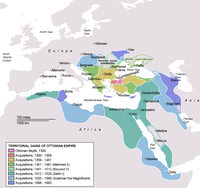
Photo from wikipedia
Abstract— For the first time in the geographical literature, an attempt is made to review the results of the rural settlement pattern reconstruction policy carried out in the 1960s–1970s. This… Click to show full abstract
Abstract— For the first time in the geographical literature, an attempt is made to review the results of the rural settlement pattern reconstruction policy carried out in the 1960s–1970s. This policy involved the division of rural settlements (RSs) into viable and nonviable. It included the resettlement of people from small villages to large settlements. The article presents data on the plans and results of resettlement of residents of nonviable villages to central farmsteads of collective (kolkhozes) and state (sovkhozes) farms of Kalinin (currently, Tver) oblast. The official list of viable RSs approved in 1977 is analyzed. The structure of this list, distribution of viable settlements in the oblast, and population dynamics of each RS from 1976 to 2010 are considered. It is shown that viable RSs have been selected illogically: many small settlements were included in the list while many large ones were not. Most of the large viable RSs are concentrated in the central part of the oblast. This is its most developed part, the “Tver triangle” (“apexes” coincide with cities Rzhev, Vyshnii Volochek, and Kimry). Analysis of the population dynamics of viable RSs made it possible to identify several variants of population change from 1976 to 2010: from a significant increase to a decrease in the resident population. In general, the dynamics were negative. The population of more than half of the RSs decreased. Most of the viable RSs were successfully developing and gradually increasing their population as long as there were large kolkhozes. Currently, such RSs account for a significant part of the rural development centers. However, the majority of settlements once classified as nonviable still exist. It is concluded that the policy of resettlement and transformation of rural settlement pattern has failed. It is shown that there is an inadequate understanding of the results of this policy in Russian society and the scientific community. The article is intended as a reminder of the uselessness of volitional decisions aimed at radical changes in settlement pattern.
Journal Title: Regional Research of Russia
Year Published: 2020
Link to full text (if available)
Share on Social Media: Sign Up to like & get
recommendations!